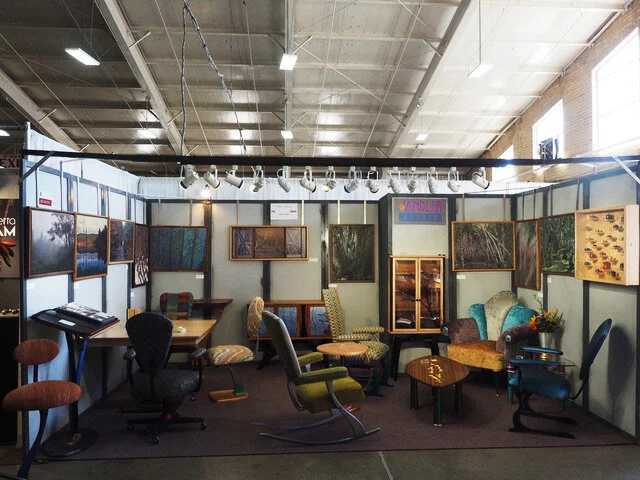Bio
Bio
I graduated Bates College in 1969 with a degree in Political Science. I started making and selling silver and gold jewelry in 1969 in Ithaca, NY as a self-taught jeweler. I took time off in 1978 to get my MFA at the School for American Craftsmen at Rochester Institute of Technology (RIT). It was while I was at RIT that I discovered aluminum as a material and metal machining as a creative subtractive process.
Though my work had started to move past jewelry when I was in graduate school, I returned to jewelry as a means to make a living after finishing school. This time, however, the jewelry was made of aluminum with colored epoxy resin inlays. In 1981, while doing a show in Rochester, an interior designer saw my pieces and asked if I worked bigger. The result was a 30" x 40" aluminum table top with a purple epoxy patterned inlay. I made more aluminum and epoxy tables over the next couple of years.
I showed my first anodized aluminum table in 1984. I started to make chairs a few years later and built my first sofa in 1991. If someone were to look at the continuum of my work, from the early pieces of jewelry to my current work in furniture, the unifying element would probably be my search for color.
I have shown extensively in the Mid-Atlantic and New England Regions of the United States. Further afield, I have also shown in Chicago, San Francisco, Georgia, North Carolina and Florida. I am a member of the American Craft Council (www.craftcouncil.org/ ) and a founding member and former trustee of the Furniture Society (www.furnituresociety.org). I had honor of being one of the featured craftspersons in the May 2000 issue of Smithsonian Magazine ("The Timeless Art of Crafts," by Diane Bolz, May 2000, pp.86-96).
My goal, early in the 21st the century, is to have people look at my furniture 20 or 30 years from now, still love it, and see it as good furniture, and of an earlier time. I believe that all good art or good design is dated, that it exists in a technological, social, economic and moral context. To that extent, everything we do is a self-portrait. I believe that the art and artifacts that a culture leaves behind tells more about who they are than any other marker of that society.








